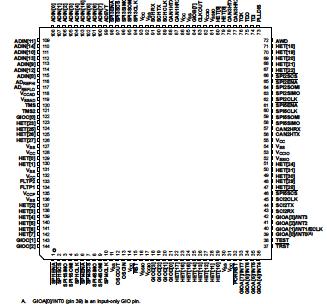TMS470R1B768: Features: ` High-Performance Static CMOS Technology Five Serial Peripheral Interfaces (SPIs)` TMS470R1x 16/32-Bit RISC Core ` 255 Programmable Baud Rates (ARM7TDM™) Two Serial Communication...
floor Price/Ceiling Price
- Part Number:
- TMS470R1B768
- Supply Ability:
- 5000
Price Break
- Qty
- 1~5000
- Unit Price
- Negotiable
- Processing time
- 15 Days
SeekIC Buyer Protection PLUS - newly updated for 2013!
- Escrow Protection.
- Guaranteed refunds.
- Secure payments.
- Learn more >>
Month Sales
268 Transactions
Payment Methods
All payment methods are secure and covered by SeekIC Buyer Protection PLUS.

 TMS470R1B768 Data Sheet
TMS470R1B768 Data Sheet







